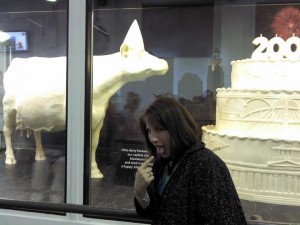Here is a link to my project for assignment 1: http://www.andrew.cmu.edu/user/elazrus/Assignment%201/games/tutorial.en.html
It is not complete yet; I think I made the scope a little bit bit that what the assignment entails but it has the backbones of what the final project will have. The story is about a “typical” unit family (2 parents, 2 kids, and a dog) and follows a day of their life. It starts at the end of the day, where the whole family realizes what a wreck their living room is. The branching narrative then allows you to follow a character through their day and anytime they intersect with another character, you can switch. At the beginning of the story, the story itself also informs you that the vowels have gone missing and asks you to find them while you follow the story. The vowels have actually been misplaced by the family members as objects in their everyday lives and you can click on their links to bring them back to the story. What you realize as you go through the story is that the family members are completely obvious to each other and their surroundings and that throughout the day each of them contributes to the mess in the living room and takes a vowel.
Most of the text that is in the project right now is sort of “place-holder” text to remind me what I want to happened where but the passages where you can find vowels are more indicative of what the language will actually be like.
As of right now I have the vowel-stuff working but the code to actually remove the vowels from the text is commented out because I realized I need to be more selective about word choice to make sure the text is still comprehensible and I haven’t had time to add this in yet. I currently have it so that when a vowel is removed it is replaced by an underscore but even that makes the text a little hard to read if a word is very vowel-heavy.
I also added in the feature that once you’ve chosen to follow a certain character at a particular interaction between two or three characters, you can’t ever use that one again, so you’re forced to follow a different character if you get to that intersection again. There are some choices that affect one character but not the others and I plan to add in the feature that if you make one of these choices and you come to that passage again you are forced to make that same choice. These choices shape the characters personalities in a way and I don’t want the reader to be able to change those mid-story.
I had a couple of suggestions from Paolo about integrating the vowels better into the story by either relating the vowel to the first letter of the object is it replacing or having the letters themselves appear in the scene instead of being mistaken for objects. I am definitely open to these ideas and would like to know what you all think. As it is, I had tried to come up with objects that can be drawn like the letter they are replaced with and I had planned to include drawing of the vowel on the page they can be found. Also, I related each vowel to the character in the story that interacts with the object they replace by making the names contain only that vowel. Again, open to suggestions about what would work best.
